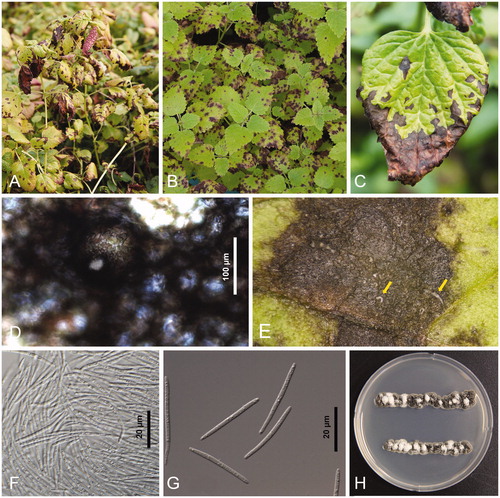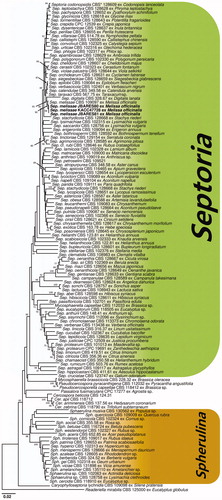Figures & data
Figure 1. Leaf spot of lemon balm (Melissa officinalis) infected with Septoria melissae. (A, B) Heavy infections detracting from the beauty of the plant; (C) Close-up symptoms in the later stage of disease development. Note the pycnidial conidiomata showing as small black dots on the lesions; (D) Conidiomata; (E) White cream-colored cirrhi of conidia being extruded through the ostioles of pycnidial conidiomata; (F) Conidia mass; (G) Conidia; (H) Two-week-old colonies of Septoria melissae growing on potato dextrose agar. Note plentiful production of conidia on the hazy gray and black colonies.

Figure 2. Neighbor-joining trees based on Actin (ACT), translation elongation factor 1-alpha (EF-1α), internal transcribed spacer (ITS), 28S nrDNA (LSU), and RNA polymerase II second largest subunit (RPB2) sequences of Septoria melissae from lemon balm, and Septoria spp. retrieved from GenBank. The numbers above the nodes are the bootstrap values obtained from 1,000 replicates. The isolates obtained in this study are shown in boldface. *CBS: CBS-KNAW Fungal Biodiversity Center, Utrecht, the Netherlands.

